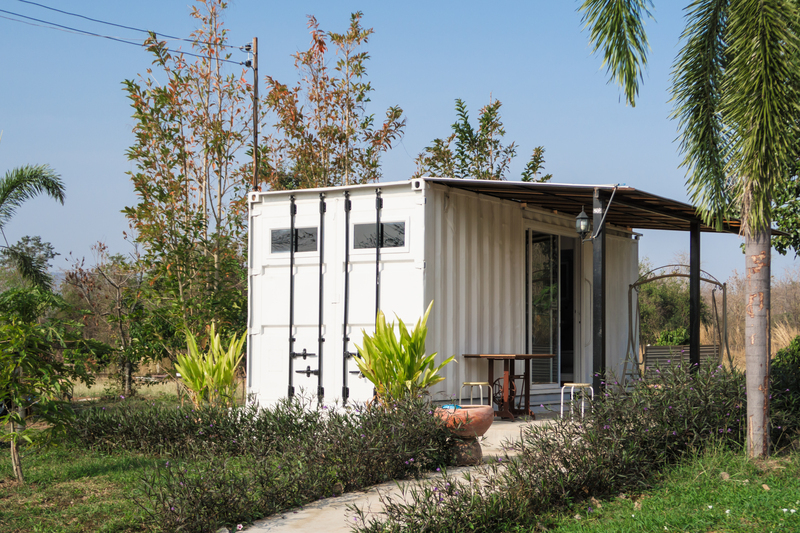Essential Steps for Disposing of Used PPE Responsibly
The use of Personal Protective Equipment (PPE) has skyrocketed globally since the outbreak of the COVID-19 pandemic, making responsible disposal of used PPE a critical concern for public health, environmental sustainability, and workplace safety. Properly disposing of used PPE like masks, gloves, face shields, and gowns minimizes the risk of contamination and helps protect our ecosystems from non-biodegradable waste. This comprehensive guide explores the essential steps for disposing of used PPE responsibly, offering practical advice for individuals, households, businesses, and communities.
Why Responsible PPE Disposal Matters
With billions of pieces of disposable PPE consumed every month around the world, improper disposal can have serious consequences, including environmental pollution, increased risk of disease transmission, and clogging of municipal waste streams. Understanding the importance of responsible PPE disposal is the first and most vital step.
- Environmental Impact: Most used PPE is made from plastics that take hundreds of years to decompose, contributing to land and marine pollution.
- Health Risks: Used PPE can harbor viruses and bacteria, posing a threat to waste workers, the general public, and wildlife.
- Resource Waste: Failure to segregate and process PPE waste correctly leads to inefficient recycling and increased landfill use.
Adopting safe, sustainable disposal practices for used PPE is essential for safeguarding both human health and the planet.

Identifying Types of PPE Waste
Before proceeding with disposal, it's important to recognize various types of PPE used in different settings, as disposal methods may vary. Here are common examples of PPE waste:
- Masks: Surgical, cloth, N95 respirators, and disposable masks
- Gloves: Disposable nitrile, latex, and vinyl gloves
- Face Shields and Goggles: Plastic or polycarbonate face coverings
- Protective Clothing: Gowns, aprons, and shoe covers
- Other Items: Hairnets, bouffant caps, and earplugs
Identifying your PPE allows for the correct handling and proper disposal procedures in line with safety regulations.
Step-by-Step Guide to Responsible Used PPE Disposal
1. Remove Used PPE Safely
- Clean Hands Before Removal: Wash your hands thoroughly with soap and water or use a sanitizer.
- Avoid Touching the Front of PPE: Always remove PPE by handling the straps or ear loops to minimize contact with contaminated surfaces.
- Follow Correct Removal Sequence: Remove gloves first, then gown, and lastly face masks or shields.
Proper removal reduces your risk of cross-contamination.
2. Assess If PPE Can Be Reused or Recycled
- Reusable PPE: Some items, such as certain face shields or washable gowns, can be cleaned and reused if not visibly soiled or damaged.
- Non-recyclable Disposable PPE: Most masks and gloves cannot be recycled because they are made from mixed materials that are often contaminated.
- Check Your Local Guidelines: Some areas have take-back programs or medical waste collection points for used PPE.
If PPE must be discarded, it should always be done in accordance with local waste regulations to ensure compliance and safety.
3. Segregate Used PPE from Regular Waste
- Designate a PPE Waste Bin: Place a clearly labeled, lined bin specifically for used PPE.
- Use a Bin with a Lid: A bin with a lid minimizes exposure and reduces the risk of contamination spreading.
- Do Not Mix PPE with Recyclables: Mixing used PPE with recyclables can contaminate the recycling stream.
Segregation at the source is a fundamental step in the safe disposal of PPE waste.
4. Seal and Store Before Disposal
- Double-Bagging: Place the bin liner or bag with used PPE into a second bag before final disposal, especially for medical or potentially infectious waste.
- Avoid Overfilling: Overstuffed bags are more likely to tear or spill.
- Seal Securely: Tie bags tightly to prevent any leaks or accidental exposure.
Proper sealing and storage further reduce health hazards for anyone handling waste after its collection.
5. Dispose in the Designated Waste Stream
- Household PPE Waste: If you are not sick, used PPE should be disposed of with your household rubbish, not in recycling or composting bins.
- Infectious or Medical Waste: If PPE is contaminated by infected individuals, it should go into a designated clinical waste bin for sanitary disposal, separated from household waste.
- Public and Workplace Settings: Follow site-specific protocols and regulations for infectious waste collection.
*Disposing of used PPE correctly ensures that it is processed safely and does not end up littering public spaces or contaminating the natural environment.*
6. Clean Hands After Disposal
- Wash your hands thoroughly with soap and water for at least 20 seconds after handling used PPE waste.
- When water is not available, use an alcohol-based hand sanitizer.
Never underestimate the importance of hand hygiene as the final barrier against contamination.
Tips for Reducing PPE Waste
While proper disposal of personal protective equipment is crucial, reducing the overall amount of disposable PPE you use is even more sustainable. Here are ways to cut down on PPE waste:
- Opt for Reusables: Where appropriate, use reusable masks, gowns, and shields that can be thoroughly cleaned and sanitized.
- Purchase Quality Products: Durable, high-quality PPE tends to last longer and work better than cheaper, disposable alternatives.
- Educate & Train: Ensure everyone in your household, business, or workplace understands correct PPE use and disposal procedures.
- Support PPE Recycling Initiatives: Participate in or advocate for recycling programs that accept used PPE, such as TerraCycle's Zero Waste Boxes.
PPE Disposal in Public Spaces and Workplaces
Proper management of PPE waste in workplaces, healthcare settings, and public areas is vital to preventing litter and maintaining hygiene.
For Employers and Facility Managers:
- Provide Clearly Labeled PPE Bins: Place bins where PPE is likely to be removed (entrances/exits, staff rooms, changing areas).
- Regularly Empty and Sanitize Bins: Ensure timely collection and cleaning of waste receptacles to prevent overflow and odor.
- Display Clear Signage: Use informative signs and instructions at disposal points to guide staff and visitors on proper methods.
- Comply with Occupational Safety Regulations: Stay updated on local waste handling protocols and health authority guidelines.
For Healthcare Facilities:
- Separate Infectious Waste: Used PPE from patient care areas must be disposed of as clinical or hazardous waste, not general trash.
- Follow Stringent Protocols: Adhere strictly to infection control measures and regularly train staff on updates.
Community and Government Responsibilities
Communities and governments play a pivotal role in the responsible disposal of PPE by establishing clear collection systems, launching public awareness campaigns, and investing in sustainable solutions.
- Launch Public Education Drives: Inform the public on the hazards of improper PPE disposal and responsible practices through social media, signage, and local media.
- Establish Take-Back Schemes: Set up drop-off points for used PPE and collaborate with third-party recyclers.
- Monitor and Enforce Regulations: Implement and enforce penalties for illegal dumping or littering of PPE waste.
Environmental Impact of Improper PPE Disposal
Discarded masks and gloves are now common sights on streets, beaches, and in waterways. This litter poses a serious risk to marine life and exacerbates the global plastic pollution crisis. Consider these consequences:
- Animals Can Ingest or Become Entangled in PPE: Marine life and wildlife are especially vulnerable to plastic waste from masks and gloves.
- Microplastics Enter the Ecosystem: As PPE breaks down, it releases microplastics that contaminate soil and water supplies.
- Increased Waste in Landfills: Disposable PPE adds millions of tons to landfill sites each year, threatening sustainability goals.
By disposing of PPE responsibly, every person helps combat these environmental risks and contributes to a cleaner, safer world.
Legal Regulations and Recommended Standards
In many countries, legal regulations govern the disposal of infectious and medical waste, including PPE. It is important to be familiar with local waste management laws and guidelines provided by:
- Centers for Disease Control and Prevention (CDC)
- World Health Organization (WHO)
- Environmental Protection Agency (EPA)
- Local Environmental Health Agencies
Businesses and institutions may be subject to fines for non-compliance, so staying updated with the latest disposal policies and training staff accordingly is crucial.

Innovative Solutions for PPE Waste Management
As the need for responsible PPE waste disposal grows, new technologies and innovations are emerging to tackle the challenge:
- PPE Recycling Programs: Specialty recyclers accept used PPE and convert them into raw materials for new products.
- Biodegradable PPE: Researchers are developing biodegradable masks and gloves to reduce the long-term impact of PPE waste.
- Incineration with Energy Recovery: Modern incineration facilities can safely burn infectious PPE waste, generating energy while minimizing pollution.
Supporting or advocating for these innovations can further improve our collective response to the PPE waste crisis.
Conclusion: Every Step Counts
The challenge of responsible PPE disposal is one that requires individual vigilance, institutional action, and community cooperation. By following these essential steps for disposing of used PPE responsibly, we can all contribute to public health, environmental protection, and a sustainable future.
- Be diligent in following disposal protocols.
- Educate others on the proper methods for handling PPE waste.
- Advocate for improved waste management and support innovative solutions.
Together, we can minimize the risks associated with PPE waste and ensure a cleaner, healthier world for generations to come.
If you have questions about local regulations for disposing of used PPE or want to learn more about sustainable PPE options, contact your local waste management services or visit official health authority websites for up-to-date guidance.